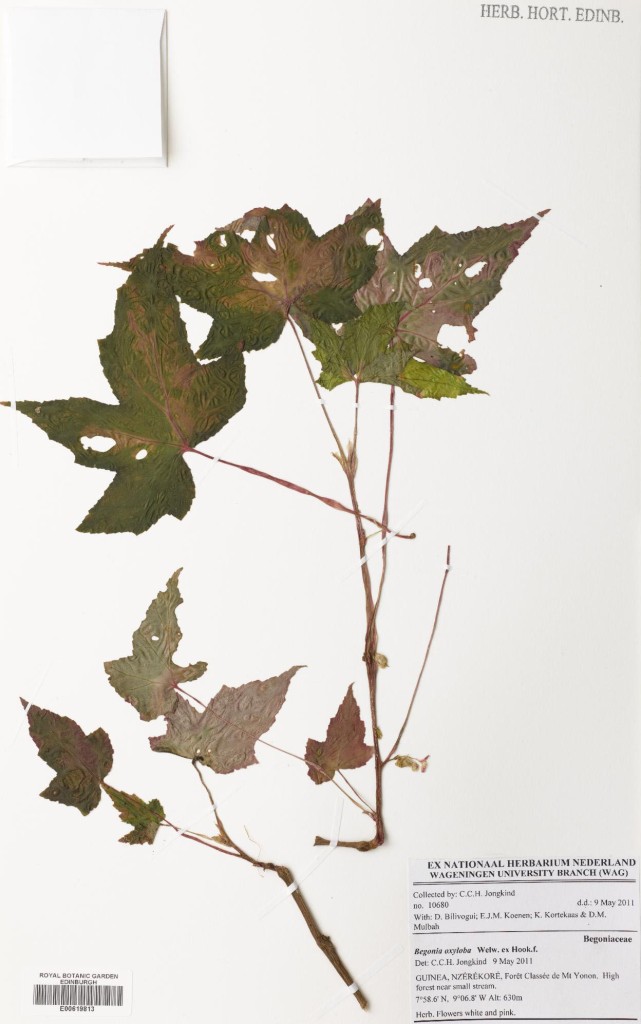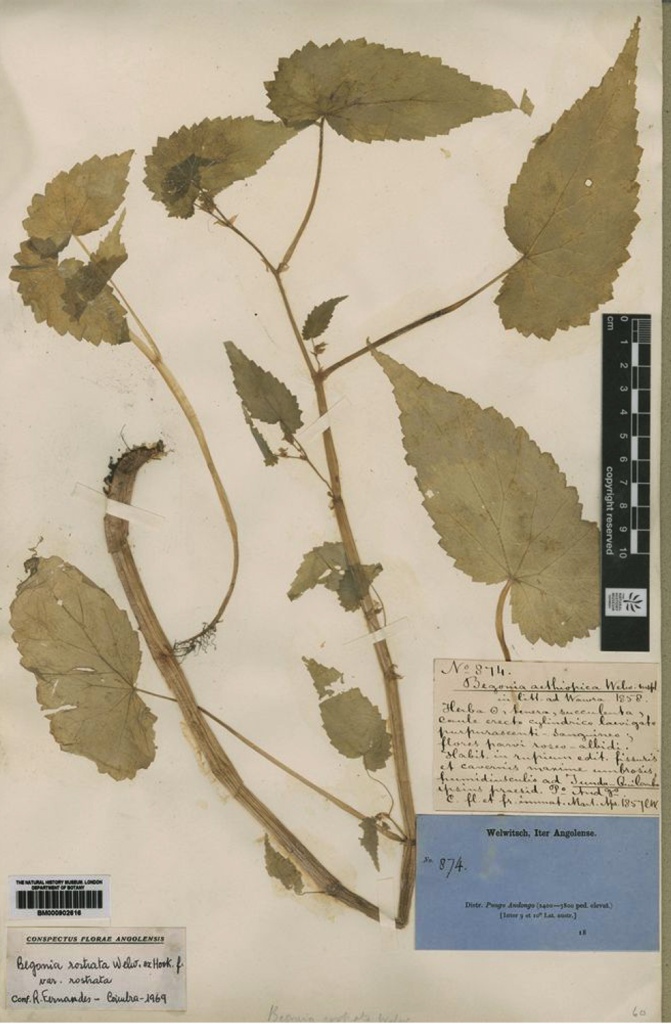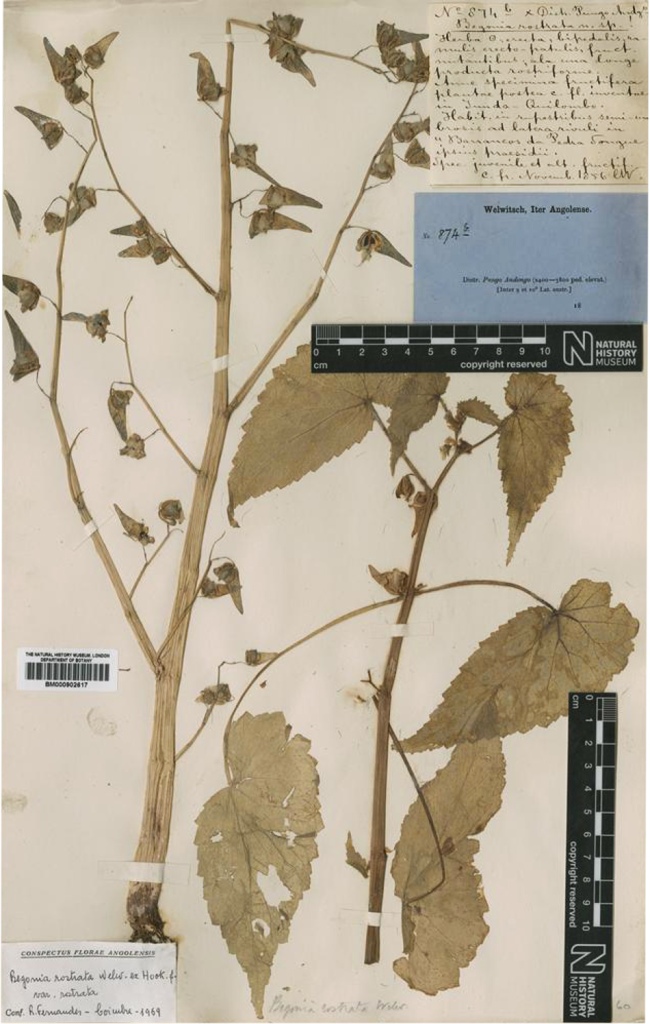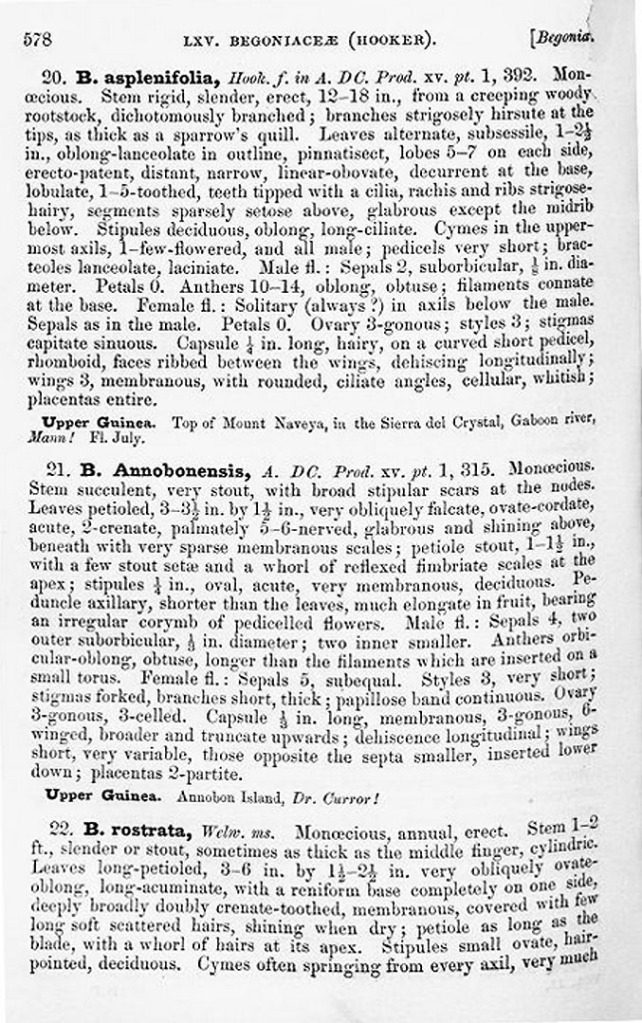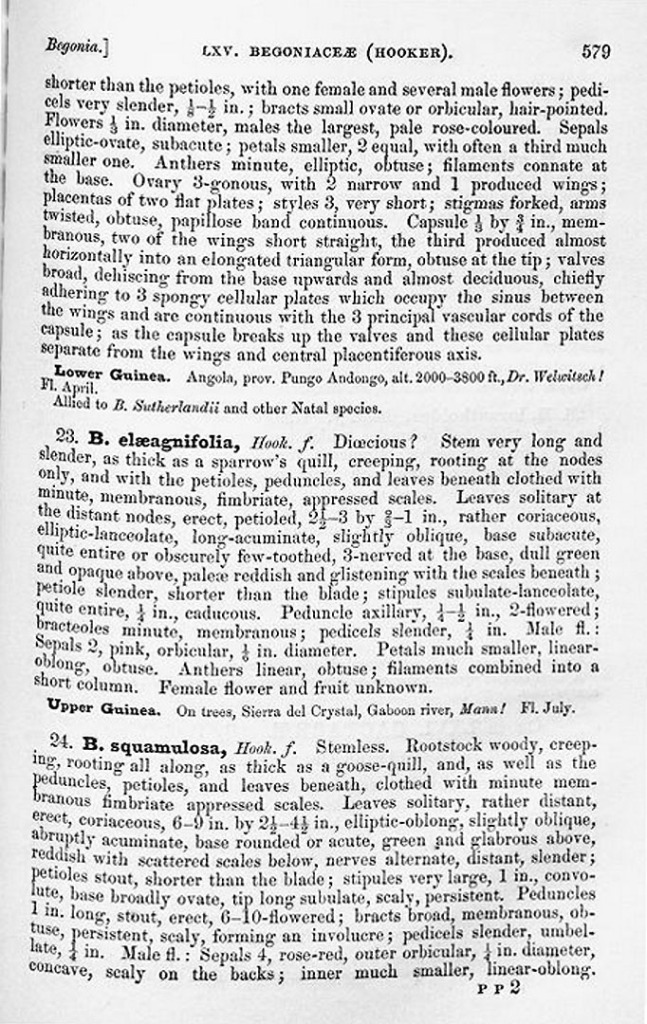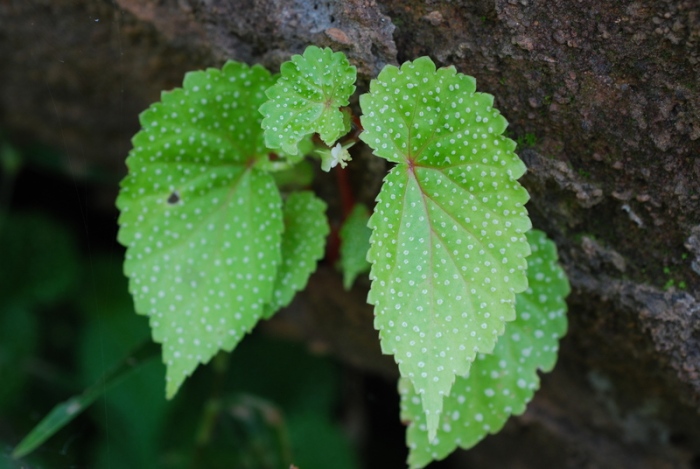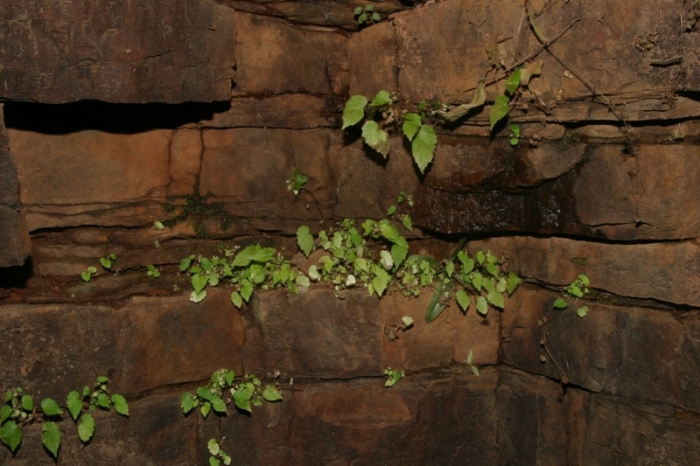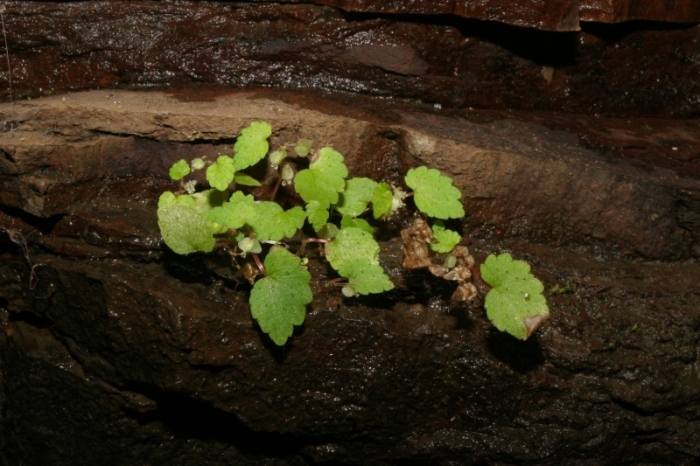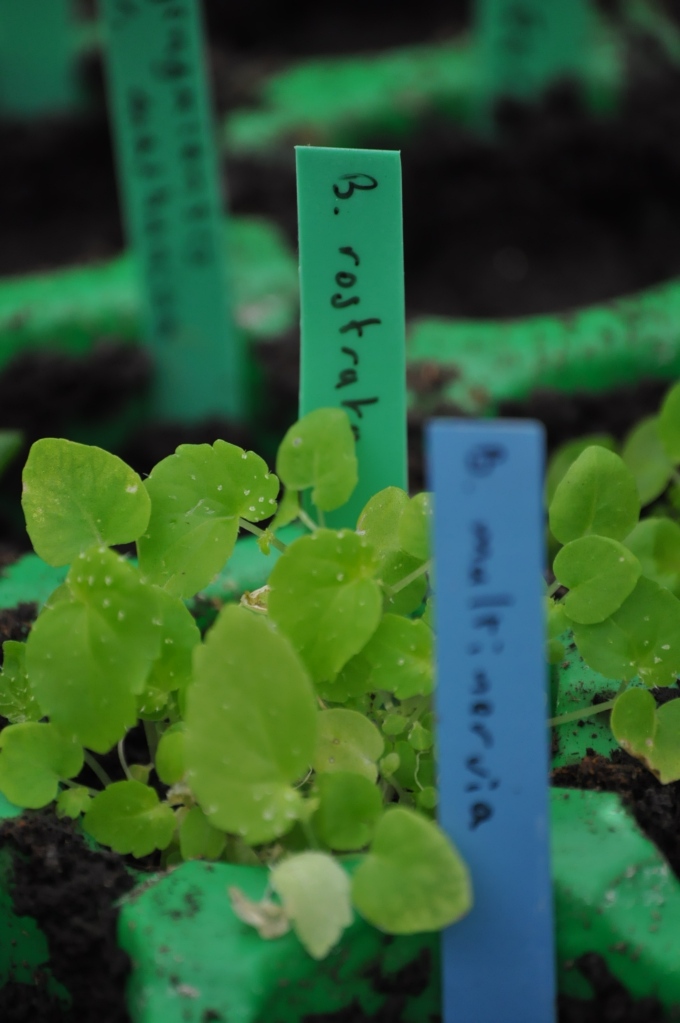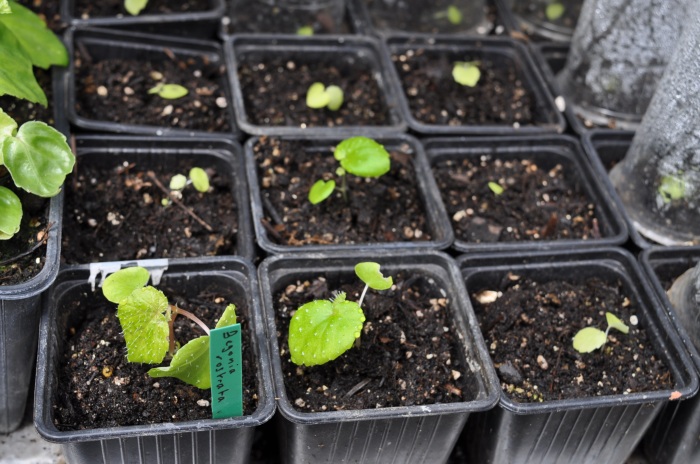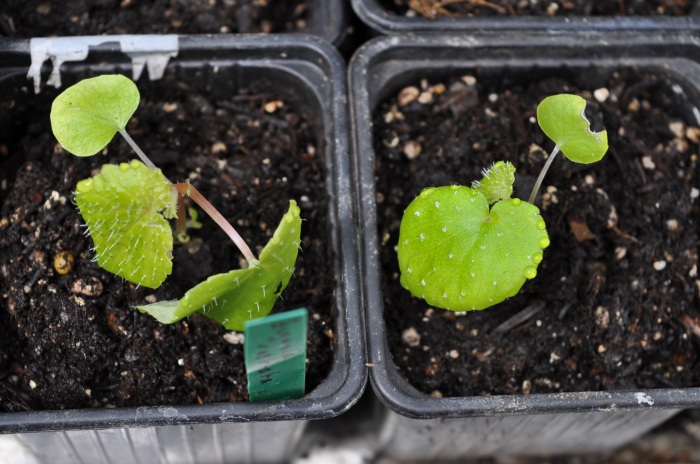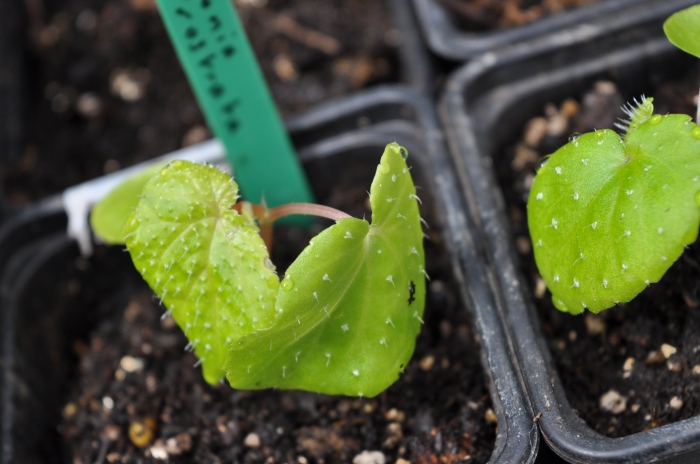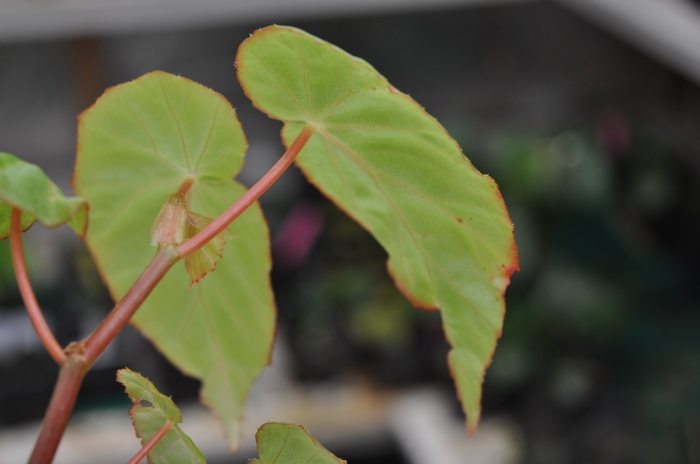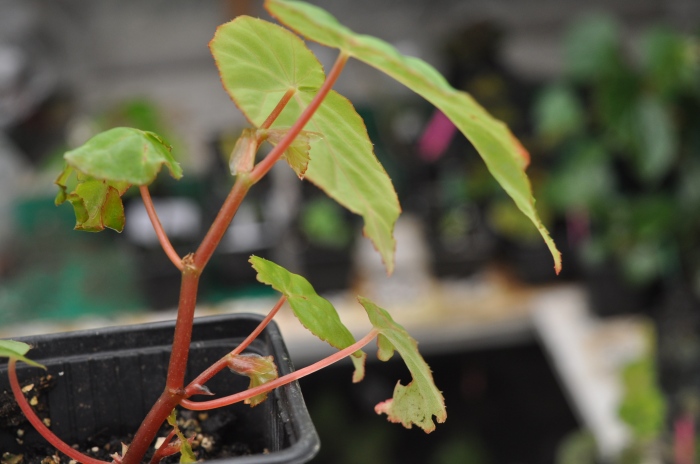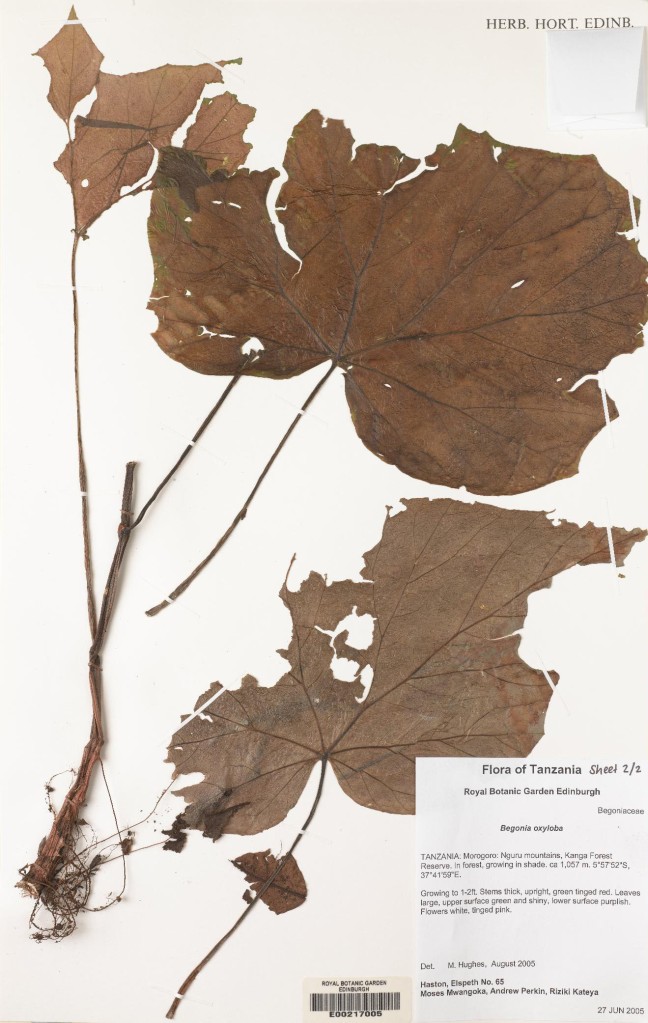
La plante a été découverte par Friedrich Martin Josef Welwitsch (1806-1872), en janvier 1856 dans le secteur de Cuanza Norte, Golungo Alto, dans la forêt primitive de la Mata de Quisuculo dans le Sobato de Bango, en Angola.
Espèce décrite dans Flora of Tropical Africa 2, page 573, en 1871 par Joseph Dalton Hooker (1817-1911), à la suite des travaux de Friedrich Welwitsch (1806-1872).
L’épithète spécifique oxyloba vient de oxy-, aigu, pointu, et de lobatus, lobé, et signifie donc « à lobe pointu »
L’espèce fait partie de la section Mezierea.
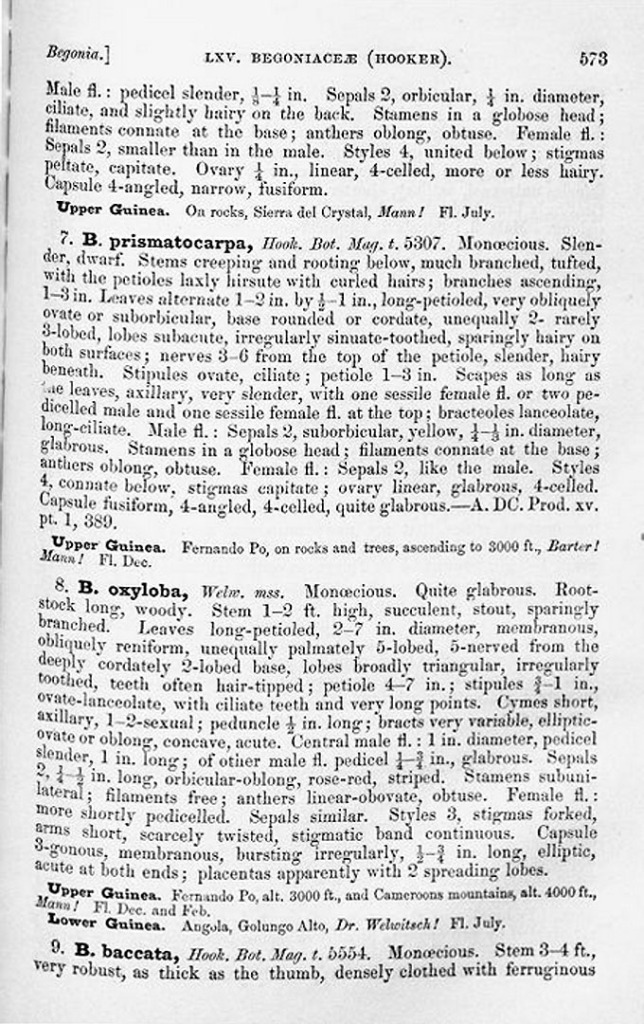
Ce bégonia à l’aire de répartition très étendue est originaire d’Afrique tropicale et de Madagascar.
Afrique tropicale orientale : Kenya ; Tanzanie ; Ouganda
Afrique tropicale du Sud : Angola ; Malawi ; Mozambique
Afrique tropicale de l’Ouest : Côte d’Ivoire ; Ghana ; Guinée ; Liberia ; Nigeria ; Sierra Leone ; Togo
Afrique tropicale occidentale et centrale : Burundi ; Cameroun ; Guinée équatoriale ; Gabon ; Rwanda ; Zaïre
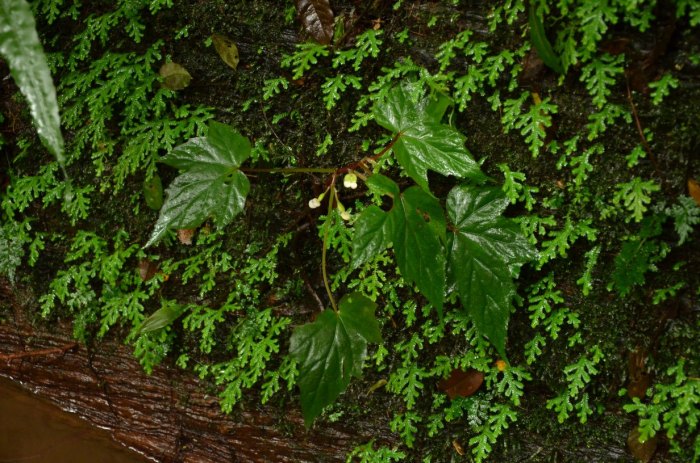
Plante herbacée annuelle, douce, aqueuse, à tiges ascendantes non ramifiées, souvent avec l’apparition de racines au niveau des nœuds inférieurs, de 25 centimètres à 2 mètres de long, ligneuse dans la partie inférieure. Feuilles plus ou moins ovales, de 7-14 centimètres de long, la plupart du temps avec 5 lobes pointus, cordées à la base, vertes, glabres ou légèrement hispides au-dessus, sans poils et vert foncé ou rougeâtre dessous. Bordure des feuilles légèrement et irrégulièrement dentée. Fleurs en bout de tiges, axillaires, sur les pédoncules de 15 à 30 millimètres de long, unisexuées, rose pâle. Le fruit est une une baie ellipsoïde, de 20- à 30 millimètres de long, non ailé, couronné par le long stipe.
Ressemble à B. sonderiana mais a de grosses stipules et des bourgeons durs et épineux.

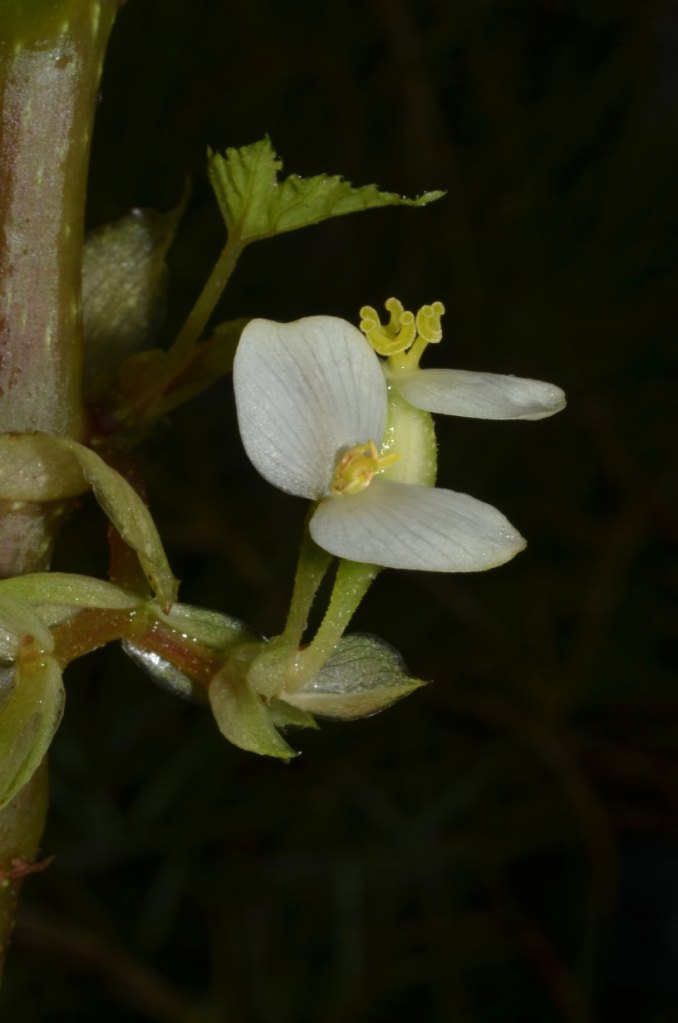
Plante de la forêt pluviale et sur les berges, roches humides, près des cascades.
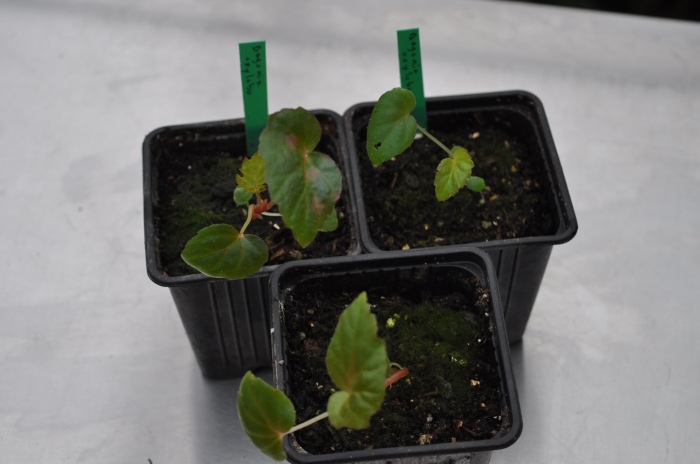



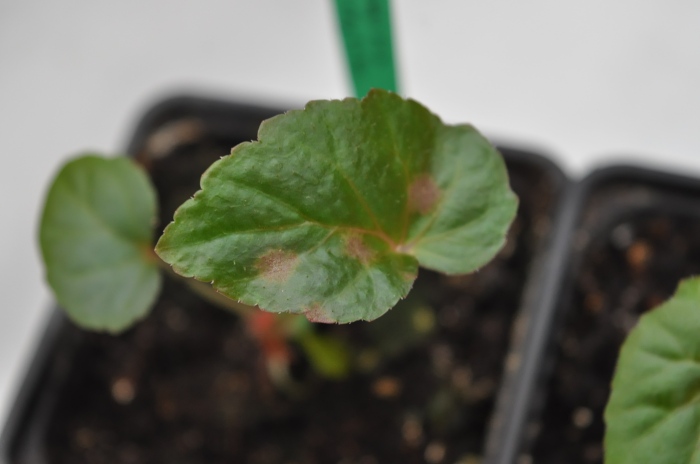
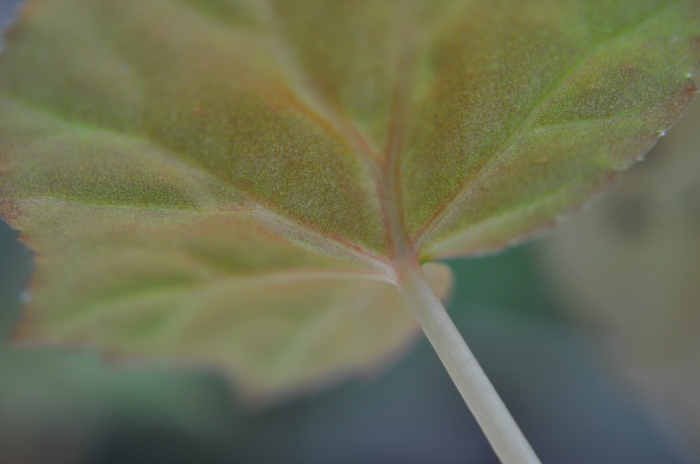

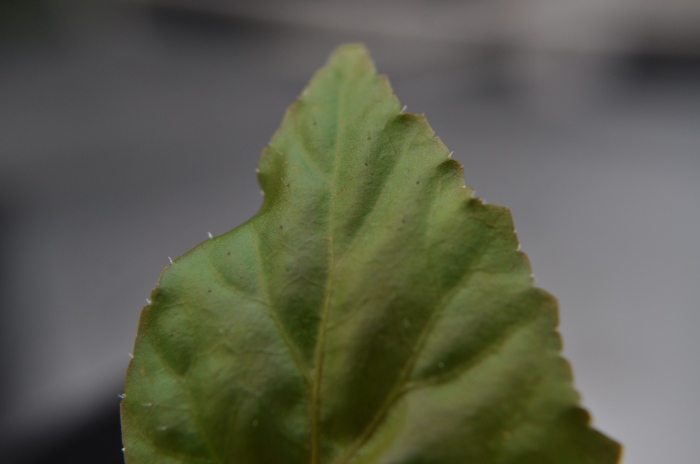
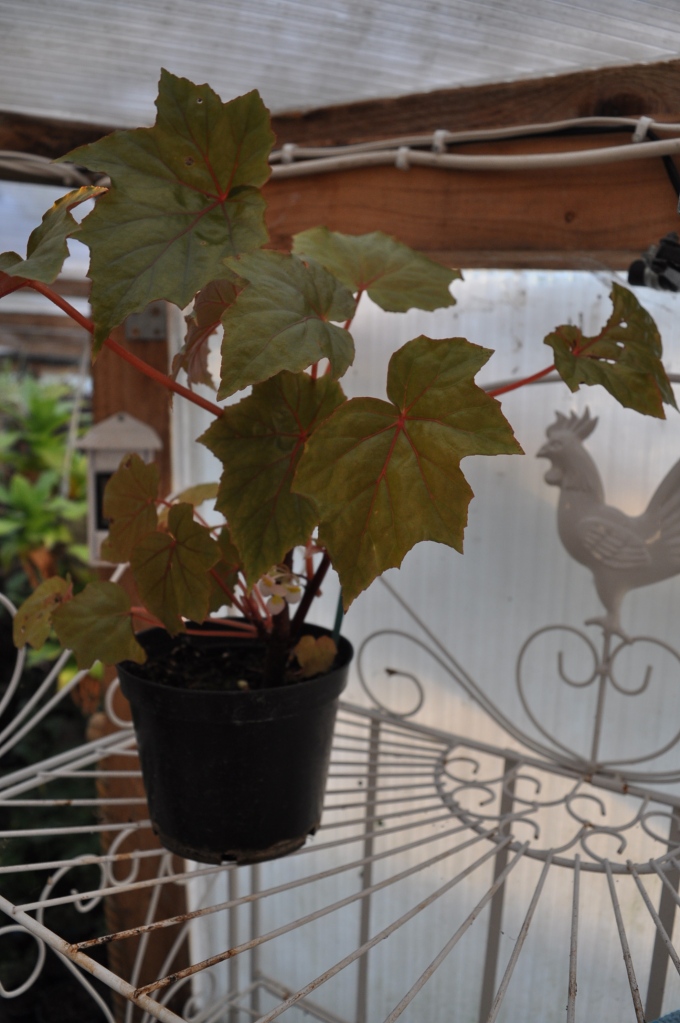
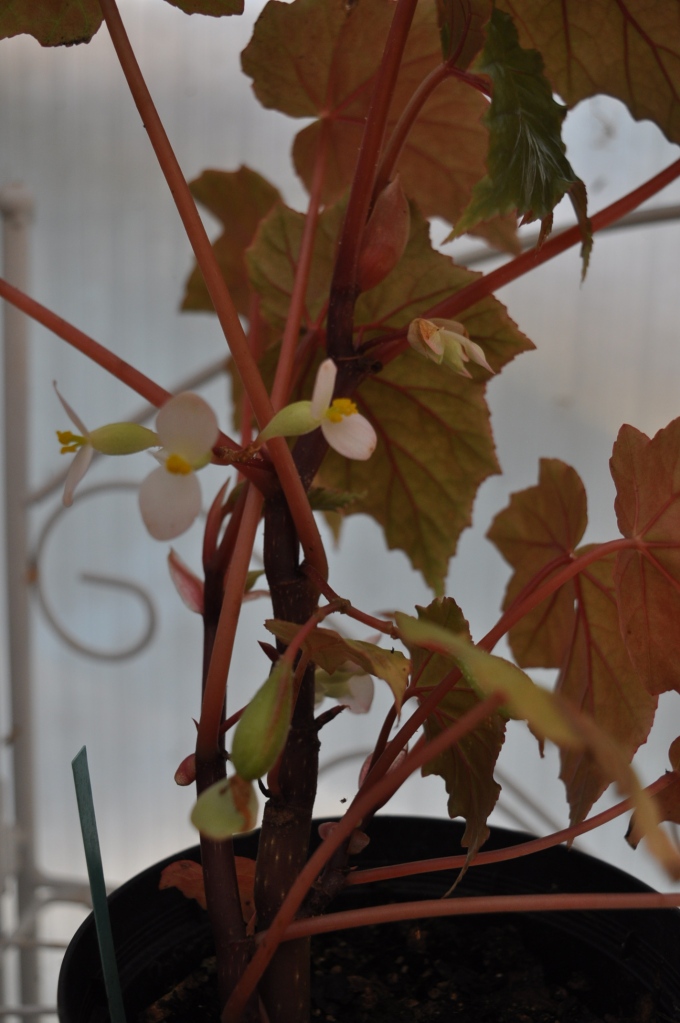
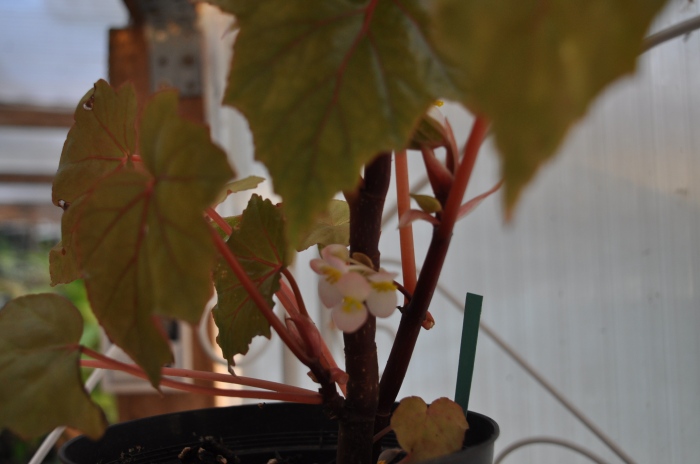

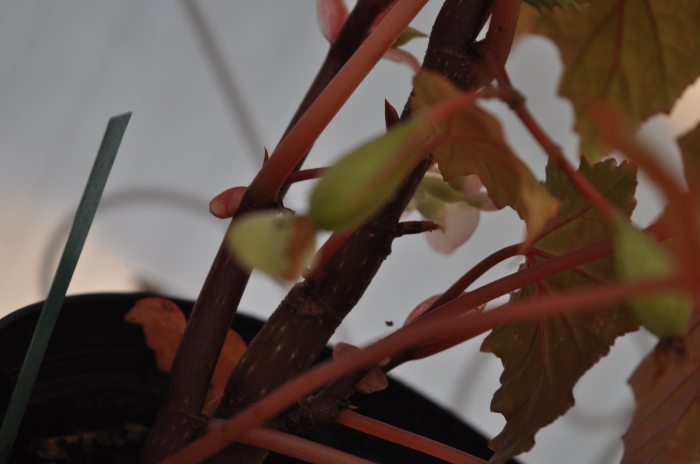
The plant was discovered by Friedrich Martin Josef Welwitsch (1806-1872), in January 1856 in the Cuanza Norte area, Golungo Alto, in the primeval forest of the Mata de Quisuculo in Sobato de Bango, Angola.
It was described in Flora of Tropical Africa 2, page 573, in 1871 by Joseph Dalton Hooker (1817-1911), following the works of Friedrich Welwitsch (1806-1872).
The specific epithet oxyloba comes from oxy-, acute, pointed, and lobatus, lobed, and therefore means « pointed lobe »
This species belongs to the section Mezierea.
This widespread Begonia is native to tropical Africa and Madagascar.
Eastern tropical Africa: Kenya; Tanzania; Uganda
Southern tropical Africa: Angola; Malawi; Mozambique
West tropical Africa: Ivory Coast; Ghana; Guinea; Liberia; Nigeria; Sierra Leone ; Togo
West and Central Tropical Africa: Burundi; Cameroon; Equatorial Guinea ; Gabon; Rwanda; Zaire
Annual, sweet, watery herb with unbranched ascending stems, often with the appearance of roots at the lower nodes, 25 centimeters to 2 meters long, woody in the lower part. Leaves more or less ovate, 7-14 cm long, most of the time with 5 pointed lobes, cordate at base, green, glabrous or slightly hispid above, hairless and dark green or reddish beneath. Leaf margins slightly and irregularly toothed. Flowers at the end of stems, axillary, on the peduncles 15 to 30 millimeters long, unisexual, pale pink. The fruit is an ellipsoid berry, 20- to 30-millimeter long, not winged, crowned by the long stipe.
Looks like B. sonderiana but has large stipules and hard, thorny buds.
Plant of the rainforest and on the banks, wet rocks, near waterfalls.
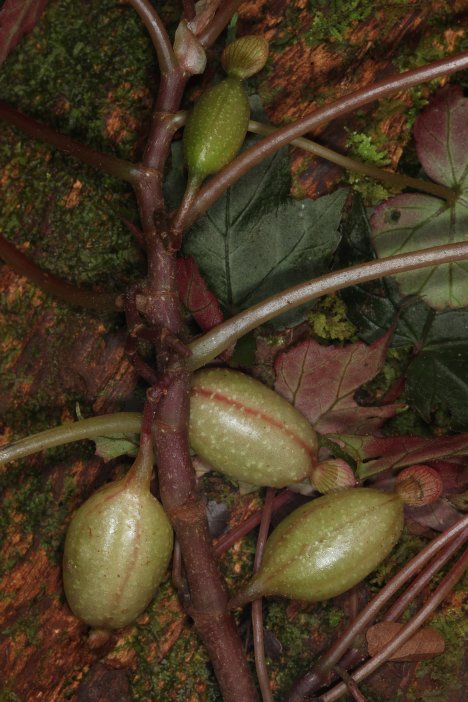
Bibliographie :
- Exell, A. W. et al., eds. Flora zambesiaca. 1960- (F Zamb)
- Keay, R. W. J. & F. N. Hepper Flora of west tropical Africa, ed. 2. 1953-1972 (F WT Afr)
- Klazenga, N. et al. 1994. Begonia sect. Mezierea (Gaud.) Warb., a taxonomic revision Bull. Jard. Bot. Natl. Belg. 63:286.
- Robyns, W. et al., eds. Flore du Congo belge et du Ruanda-Urundi. 1948-63 (F CongoRB)
- Turrill, W. B. et al., eds. Flora of tropical East Africa. 1952- (F TE Afr)
